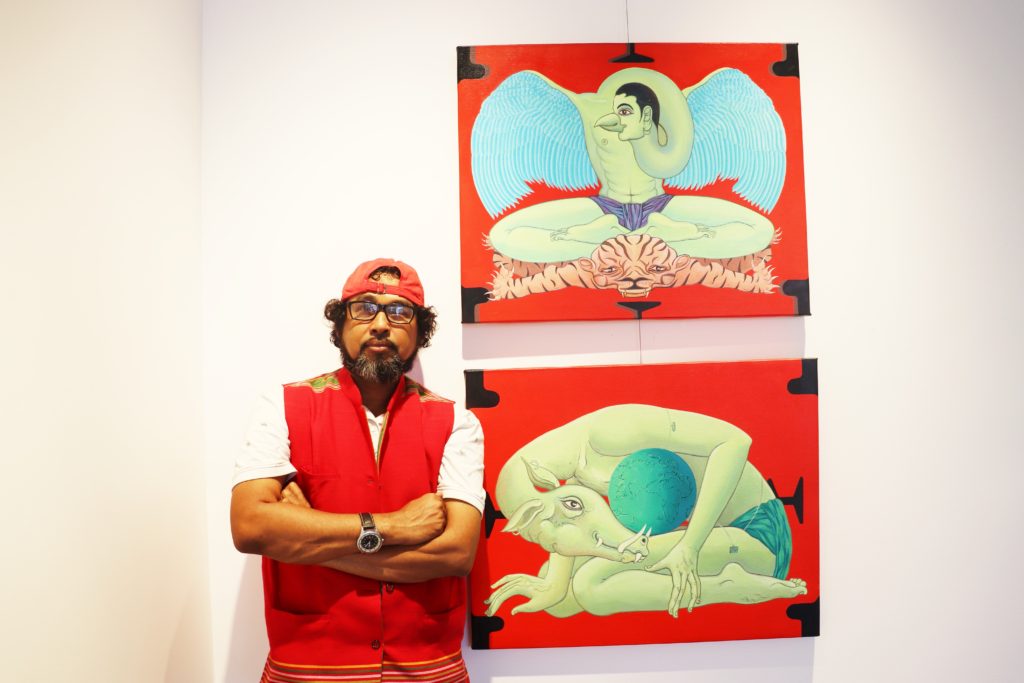1604 people reached on Lassi with Lavina FB page – 104 engagements Facebook insights
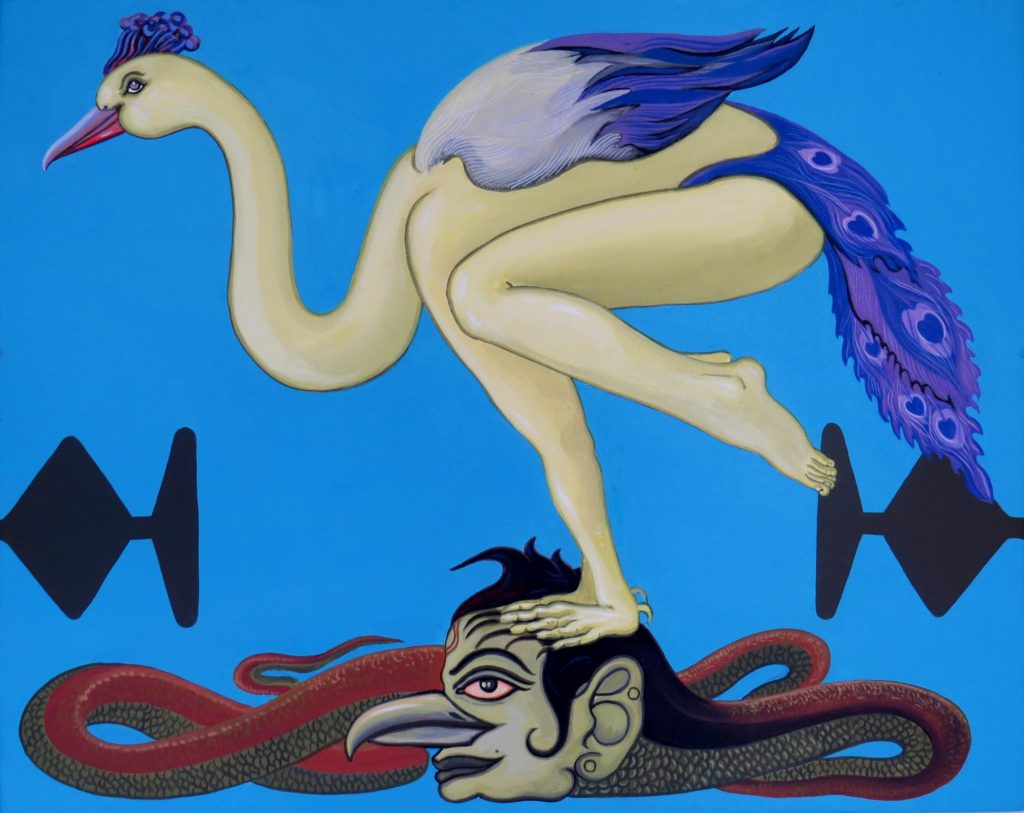
Art in the Time of Coronavirus – From Odisha to California
Birendra Pani Stitches Cultural Memories in a time of loss
[dropcap]T[/dropcap]his is a love story about art in the age of Coronavirus. With museums and galleries on shut down, art collectors have not had a chance to get close to art or contemplate it in the presence of the artist. Now things are slowly changing: Birendra Pani is an artist who actually had a solo show in a physical gallery, Fresh Paint in San Diego.
He came eight months ago from India to California, and art lovers can see the result of this Indian-American encounter in a solo exhibition titled Urban Avatara – A New Mythopoesis. He mentions that since this gallery is in an art area with many other galleries it is an attraction for art lovers and tourists alike, even in these times. The show just closed, but can be seen online anytime
[dropcap]P[/dropcap]ani, like flowing water, has travelled very far from his roots and each town and city has become a part f his evolving art culminating in his latest body of work. As he says, “Avatara or incarnation is a very popular concept in India. From my childhood days, we grew up with all these beliefs. The title of my exhibition portrays my artistic journey of the last thirty years from Odisha to Santiniketan, then to Vadodara, Mumbai, Delhi and to America. It is a journey which deals with different cultural memories, contemporary culture and chaos of the present time.”
Pani came to San Diego with his wife, Dr. Rajshree Biswal, an art historian and curator who is a Fulbright- Nehru Postdoctoral Fellow at University of California San Diego Along with his wife, he has co-initiated the cultural initiative New Bridge India.
He worked for nearly eight months on this solo exhibition. Over the months he has visited art galleries, libraries, museums and met many artists in San Diego and Los Angles. He says all these experiences have seeped into the body of work he has created for the Urban Avatara Show.
This article is based on a series of questions I sent Pani in San Diego and his answers sent to me via an email interview.
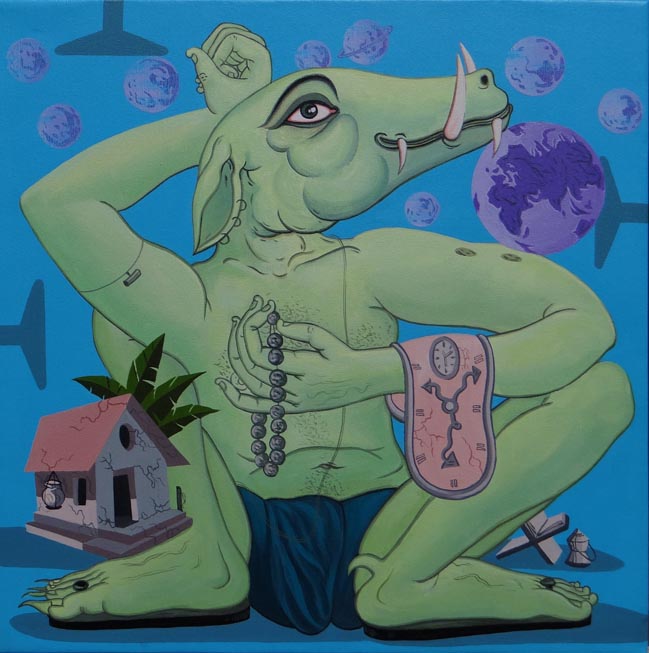
[dropcap]“I[/dropcap]n this present chaotic time due to Corona pandemic as well as in a broader sense, my work creates a new micro-dialogue,” he says. “My work is a kind of visual literature; it intends to sensitize the new generation about the present time and to create a new mythopoesis for a novel form of balance and harmony in life.”
Pani’s luminous art is a mix of past and present, and is intricately linked to his growing up years. He says simply, “My family has a very significant role to play in my artistic journey.” He was born in Bhadrak in the state of Odisha in an artistic family. He was inspired by his father, a self-taught artist and sculptor Prahalada Pani and influenced by jhoti- handmade decorative paintings on the walls and floor – by his mother Malati Lata Pani. His 80 year old father continues to create sculptures even today.
“Growing up, I was much inspired by Odishan literature and tradition, Odishan miniature paintings, Gotipua, Chhau and other folk dances, jatra – the local theatre – and other art forms,” he recalls. “My brothers Raju Ray, Susant Nayak, and Sushil Puhan had nurtured my interest in modern art and motivated me to join Santiniketan for my art education.”
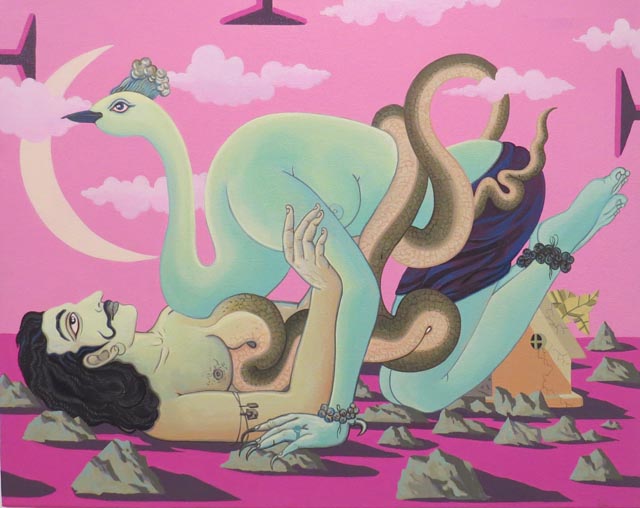
[dropcap]P[/dropcap]ani says he’s been deeply inspired by Rabindranath Tagore and the education he received at the renowned institution of Kala Bhavan in Santiniketan. He recalls “I was deeply inspired by its rich cultural atmosphere as well as literary tradition and guided by eminent artists like Ramkinka Baje, Binod Bihari Mukharjee, Somnath Hore, Jogen Chawdhury, and K.G. Subramanyan.
Later his wife Rajashree and her parents Upendra Nath Biswal and Jharana Mala Biswal inspired and supported him in his professional career as an artist.
During his MFA from M. S. University in Vadodara, he says, “ I was influenced by the technical proficiency of well-known print maker Jyoti Bhatt in print making as well as the idea of ‘everydayness’, spontaneity, sensuousness, caricature, comic and satire of famous artist Bhupen Khakhar as well as drawings of Lucian Freud on my visual language and drawings.”
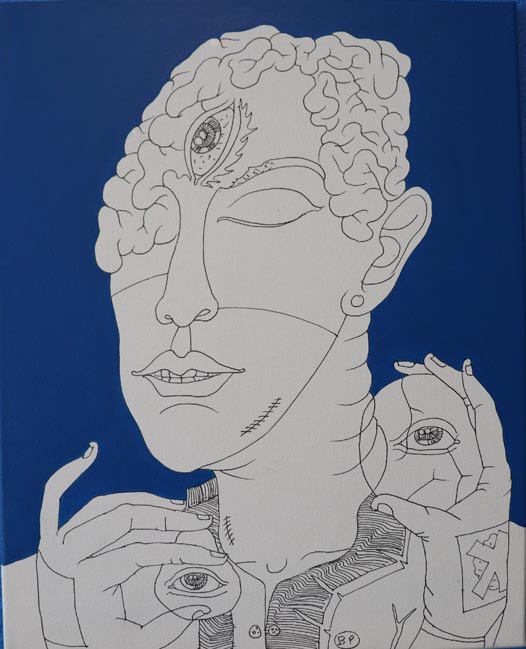
by Birendra Pani
[dropcap]P[/dropcap]ani , who has received several fellowships and awards, has participated in over 300 group exhibitions from New York to Tokyo to Australia. His exuberant art shows his engagement with colours, with yoga and dance forms like Gotipua and Chau, and these surreal figures attract and draw the viewer into a new world.
He says, “I visually fantasize my experience; condense it in my own way, creating new iconography. When I use colour in my art works, I create a visual dialogue with myself first before doing it with the larger audience. In many cases, I have used elements like blade, syringe, heart, and brain to highlight the risks and contradictions in our present time.”
He says he uses the word ‘mythopoesis’ in a personalized and condensed way, as a kind of metaphor in the artificially constructed world- signifying the distance from the past, and from nature showing the transformation, contradiction, and isolation in present time.
Some of the mythological images derived here for example, the Varaha image signifies the cosmic power in Hindu mythology who takes incarnation to save the world during apocalypse; here Varaha is juxtaposed with time, indicated as the ‘melting clock’ a reference from Dali’s work; it has taken a new incarnation for a new meditation in this chaotic time.”
By binding the past and the present, Birendra Pani’s gorgeous art creates a new way of thinking for the visitors to the gallery: He says: “Relooking and revisiting our local culture and re-establishing a new relationship with the positive aspects of our tradition will sustain us in a situation of loss in a disoriented and homogenizing world.”
(This article appeared in my weekly column ‘India in America’ on CNBCTV18.com)
Relateed articles:
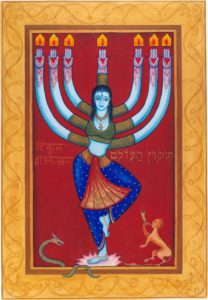
Siona Benjamin – An Indian-Jewish artist in multicultural India
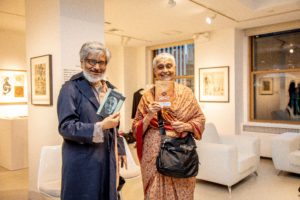
Indian Contemporary Art – Raza, Souza & More at Asia Art Week

